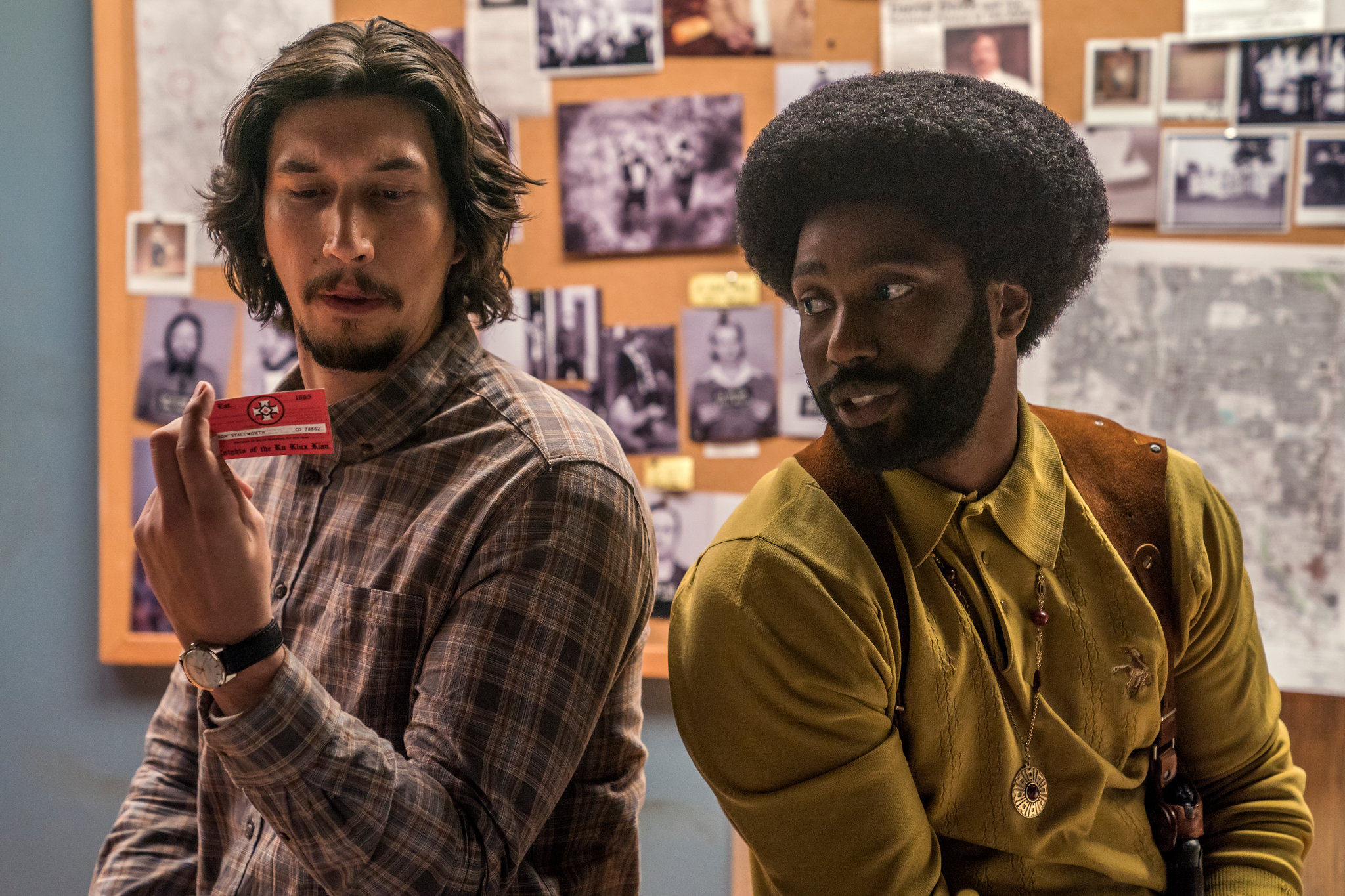Spike Lee’s latest film BlacKkKlansman tells the story of Colorado Springs’ first African-American police officer going out of his way to start an investigation into the local chapter of the Ku Klux Klan. After making a phone call, Ron Stallworth (played by John David Washington) is invited to join the KKK, but, for obvious reasons, cannot physically attend. Instead, he reaches out to a fellow police officer, Flip Zimmerman (played by Adam Driver), who stands in as Ron Stallworth to attend all of the local KKK events. The film has its own charm and humor. The humor mostly comes from the ridiculous and comedic portrayal of the Ku Klux Klan members and Tohper Grace’s performance as the KKK’s then Grand Wizard, David Duke. Its unique cinematography, character interactions, and overall concept differentiate this film from any other film I have ever come across.
After the film ends, there is a compilation of familiar, real-life news clips depicting recent tragic events intercut with some words from Donald Trump. Although showcasing this in a dark, loud theater emphasizes and draws special attention to the tragic events, this montage does not fit into the context of the film nor the concept of film nor cinemas.
Hear me out — there is no need to connect the film to today’s culture since that connection has already been made simply by the film’s existence. Films, much like any other art form, are “artifacts” of their time, which essentially means that the timing of their release gives them context and from that context, some meaning can be drawn. The film, released in 2018 and including many lines of dialogue that are well-known phrases in today’s society and that are also directly connected to events that have happened in recent memory, is enough to be reflective of today’s society on its own. It does not need any help from real-life news clips in order to connect it to our modern society. Considering that this story actually happened, it already holds its own personal truth and does not need to be grounded in reality. Although this is a true story, some details were changed to improve the overall viewing experience, to give the film’s story its own originality, and to immerse the audience in its own world. By shoving the news clips in the face of the audience, Spike Lee is shattering his own fourth wall, not allowing any room for the film to be reflective of today’s world, but instead, shoving the literal meaning of the film down the audience’s throat, which defeats the purpose of making a film that holds metaphors and immersion.
If Spike Lee is trying to re-shock and alarm the audience with the inclusion of the news clips, of course he succeeds, but the film does a good enough job at doing this anyway through the aforementioned clever dialogue.
This is not to say that the inclusion of the real-life news clips ruined my perception of the film. I thought the scenes with the local Black Student Union and its president, Patrice Dumas (played by Laura Harrier), were some of the most interesting, as the young students and their interest in social justice provide some hope for the future. At one point in the film, the Black Student Union hosts a speaker who discusses the death of one of his childhood friends who was unfairly tried and violently punished for a crime. While this meeting is happening, the KKK is celebrating Flip’s initiation and the two meetings are intercut with each other, creating a striking juxtaposition between the BSU’s mourning and discussion of justice with the KKK’s celebration of a sort of “birth” of a new member while discussing white power. All in all, BlacKkKlansman tells a story like no other and is worth a visit to the theater.

Be First to Comment